- Home
- TV History
- Network Studios History
- Cameras
- Archives
- Viewseum
- About / Comments
Skip to content
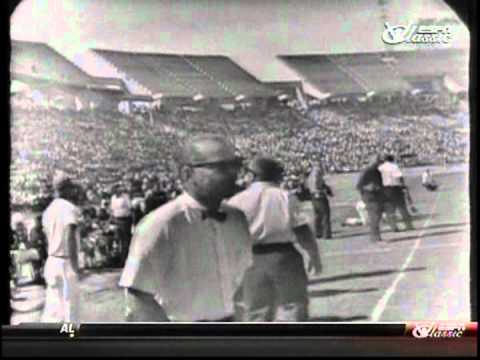

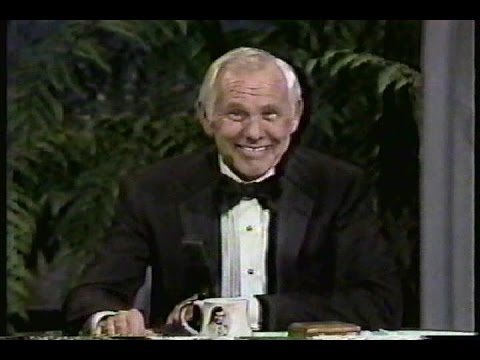

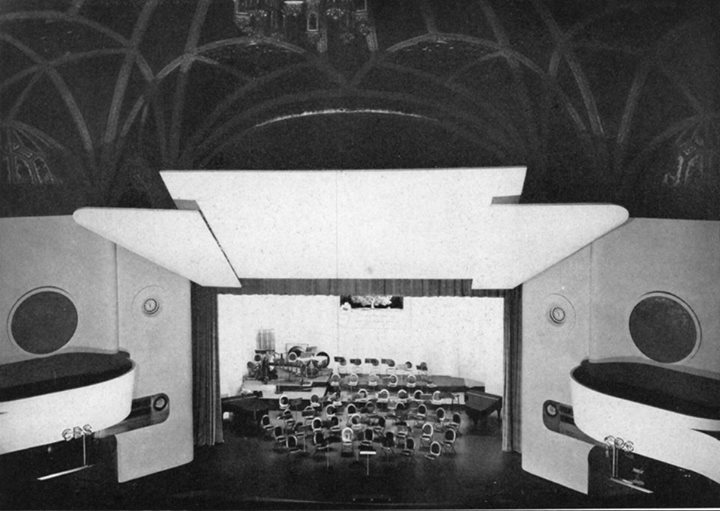

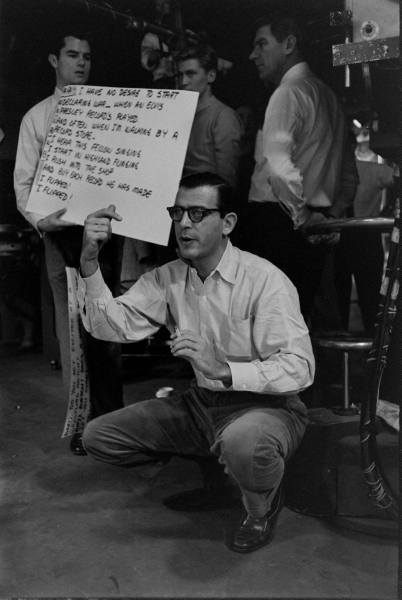



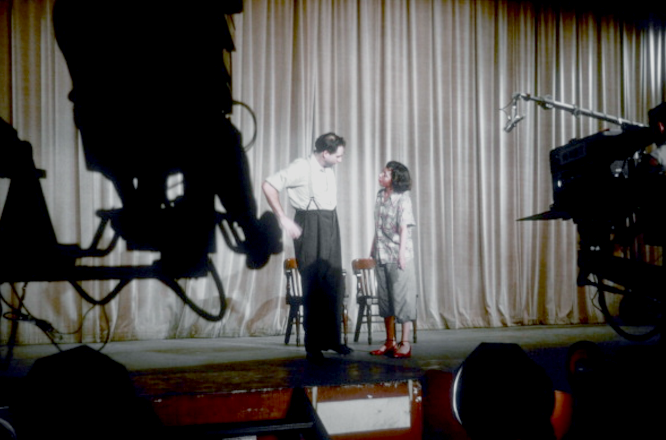

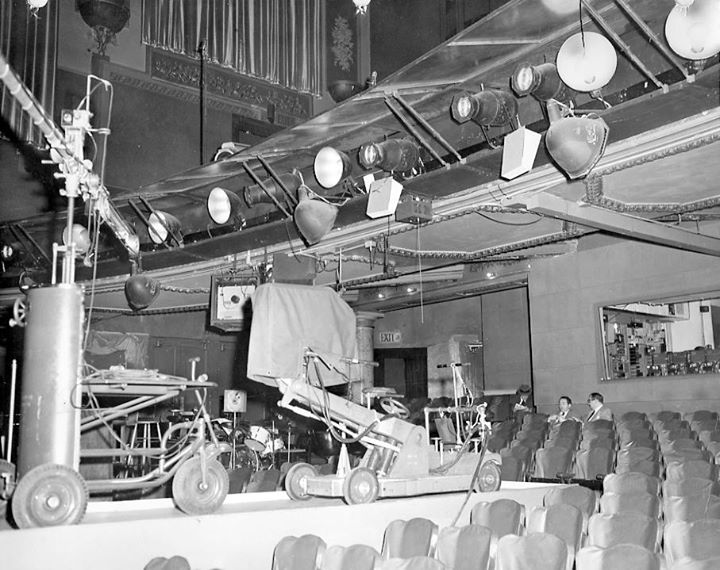

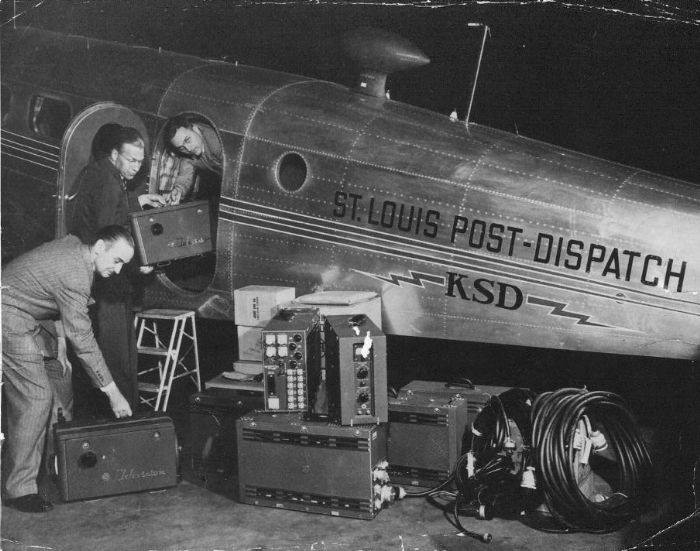

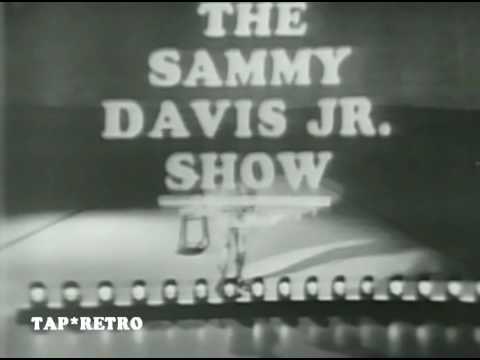

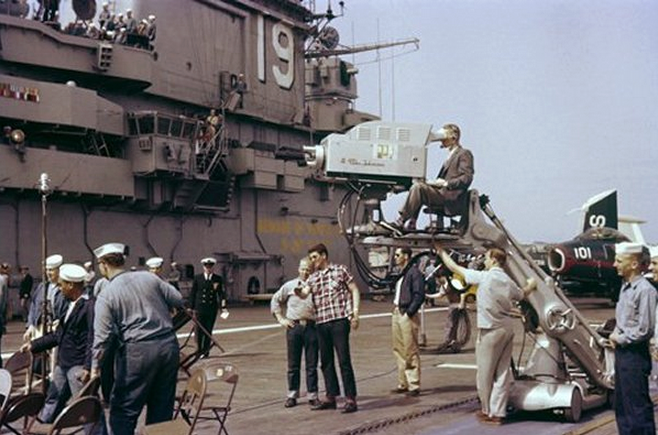

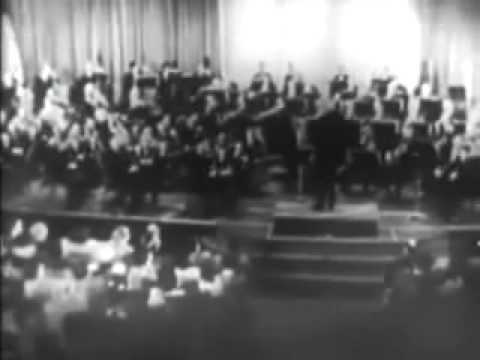

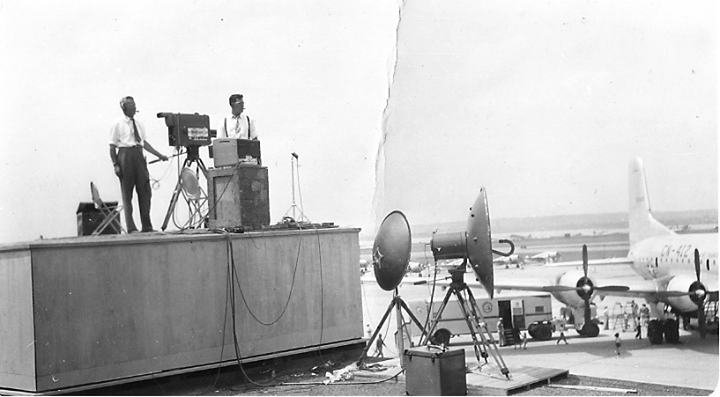



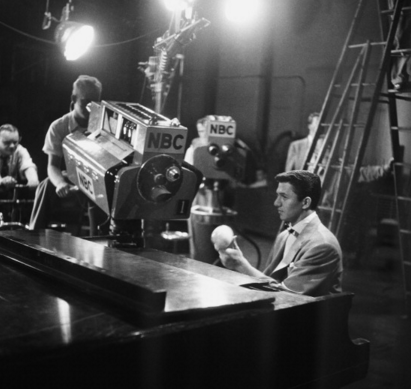

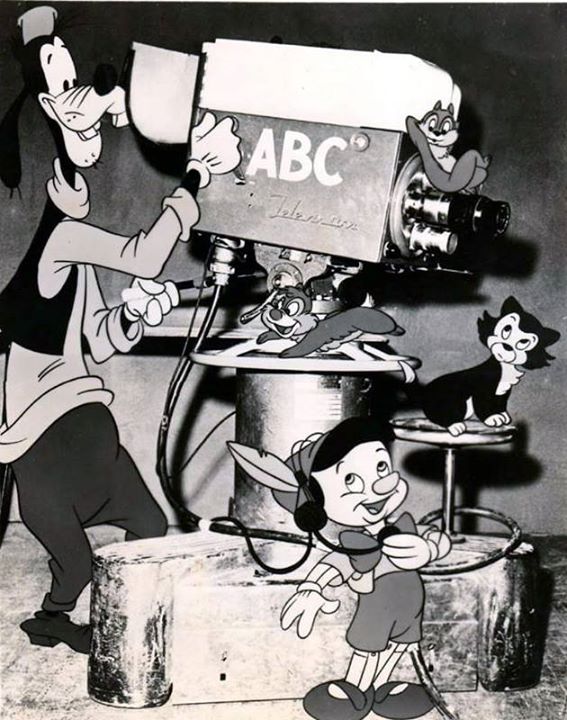

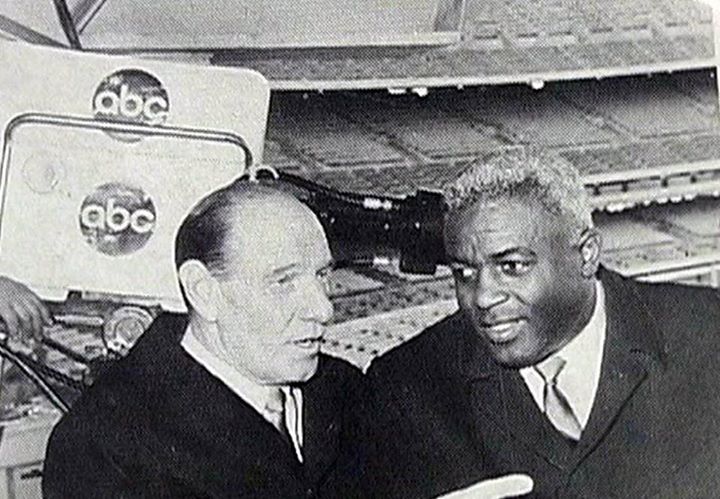



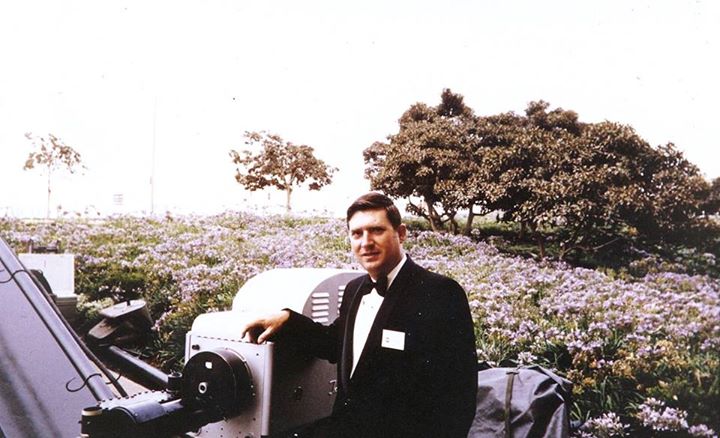

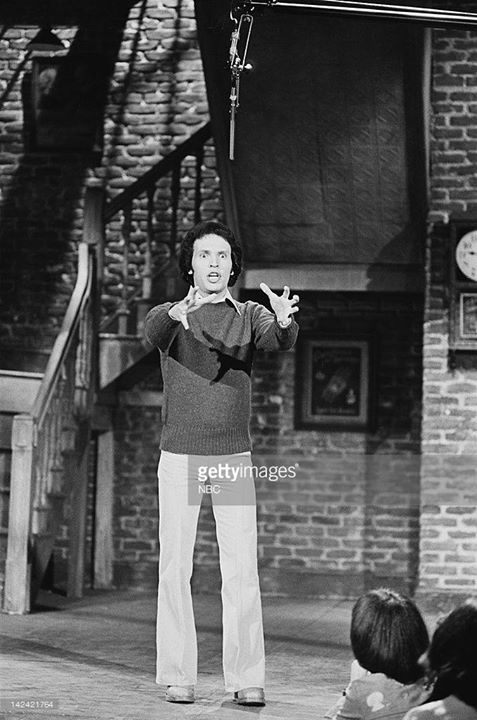

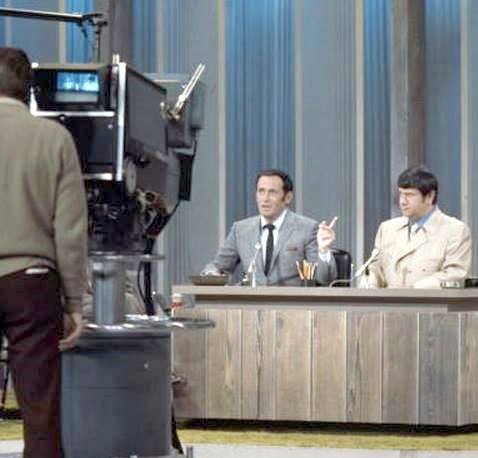

Posts in Category: TV History
Page 25 of 136
« Previous
1
2
3
4
5
6
7
8
9
10
11
12
13
14
15
16
17
18
19
20
21
22
23
24
25
26
27
28
29
30
31
32
33
34
35
36
37
38
39
40
41
42
43
44
45
46
47
48
49
50
51
52
53
54
55
56
57
58
59
60
61
62
63
64
65
66
67
68
69
70
71
72
73
74
75
76
77
78
79
80
81
82
83
84
85
86
87
88
89
90
91
92
93
94
95
96
97
98
99
100
101
102
103
104
105
106
107
108
109
110
111
112
113
114
115
116
117
118
119
120
121
122
123
124
125
126
127
128
129
130
131
132
133
134
135
136
Next » 

April 29, 1961…ABC’s “Wide World Of Sports” Debuts
On April 29, 2016
- TV History
April 29, 1961…ABC’s “Wide World Of Sports” Debuts
This video is from the last episode of ABC’s “Wide World Of Sports” debut season which started April 29, 1961. This clip highlights some firsts in football coverage.
This is the first use of a crane camera over the field, microphones on the quarterbacks and possibly, handheld sideline coverage in a professional football game. (NBC used RCA’s Walky Looky on some college games in the late 50s).
In January of ’62, WWOS was given a permanent time slot where it remained for over forty years. The show was the creation of Edgar Scherick, through his company, Sports Programs, Inc. After selling his company to the American Broadcasting Company, and joining them to run ABC Sports, he hired a young Roone Arledge to produce the show.
Around 1956, after graduating with a masters degree from Columbia College, Arlidge got a stage manager’s job at NBC’s New York City station, which was then WRCA. One of his assignments there was to help produce a children’s puppet show hosted by Shari Lewis.
Sometime in late 1960, Arledge convinced his superiors at WRCA to let him film a pilot of a show he called “For Men Only”. While his superiors liked the pilot, they told him they couldn’t find a place in the programming schedule for it. But the WRCA weatherman, Pat Hernon, who hosted the pilot, began showing it around, and Edgar Scherick was one of the people who saw it.
While Scherick wasn’t interested in “For Men Only”, he recognized the talent Arledge had. Arledge realized ABC was the organization he was looking to join. The lack of a formal organization would offer him the opportunity to claim real power when the network matured, so, he signed on with Scherick as an assistant producer for WWOS.
Several months before ABC began broadcasting NCAA college football games, Arledge sent Scherick a remarkable memo, filled with television production concepts which sports broadcasts have adhered to since. Previously, network sporting broadcasts had consisted of simple set-ups, and focused on the game itself. The genius of Arledge in this memo was not that he offered another way to broadcast the game to the sports fan. The genius was to recognize television had to take the sports fan to the game.
In addition, Arledge realized that the broadcasts needed to attract and hold the attention of women viewers. At age 29 on September 17, 1960 he put his vision into reality with ABC’s first NCAA college football broadcast from Birmingham, Alabama, between Alabama Crimson Tide and the Georgia Bulldogs. Sports broadcasting has not been the same since. Go Dawgs! -Bobby Ellerbee


Just For Fun, And Lots Of It! Johnny Caron’s 25th Anniversary Show
On April 28, 2016
- TV History
Just For Fun, And Lots Of It! Johnny Caron’s 25th Anniversary Show
The opening billboard of famous names is just staggering, and they are all here in clips, but so are some of the show’s greatest disasters, which start at about 31 minutes in. There are also clips of first time appearances from the likes of Steve Martin, Gary Shandling, David Letterman, Jay Leno, and many more. And yes, there are animals, and you know what they say about appearing in scenes with children and animals…here is the proof for both. Enjoy! -Bobby Ellerbee
Original Air Date: October 1, 1987
2 Ultra Rare Views Of The Ed Sullivan Theater…Must See!
On April 27, 2016
- TV History
2 Ultra Rare Views Of The Ed Sullivan Theater…Must See!
Aside from this super rare 1936 photo of the inside of what was then CBS Radio Theater #3, we also get a 360 degree tour of the Letterman set!
First, thanks to Val Ginter for this amazing shot of the theater in it’s radio configuration. CBS took a long term lease here in 1936 and used it daily. The first radio show to come from here was “Major Bowes Amature Hour”. Interestingly, “Arthur Godfrey’s Talent Scouts” radio show started here in 1946, and in 1948, it was the first television show from the newly renamed CBS Studio 50.
At this link, is a gorgeous 360 degree tour of Letterman’s set, taken just days before the show ended by Google https://www.google.com/maps/@40.7637784,-73.9829199,3a,75y,265.86h,102.33t/data=!3m6!1e1!3m4!1sF6p4b3jIFJwAAAQpmJtrQQ!2e0!7i13312!8i6656
Ralph Levy: Television Director Extraordinaire…
On April 26, 2016
- TV History
Ralph Levy: Television Director Extraordinaire…
Ralph Levy, TV pioneer and two-time Emmy winning director, is remembered by TV historians as the man who directed the original ‘I Love Lucy’ pilot in March, 1951, which made his passing on the date of Lucy’s 50th Anniversary, all the more poignant.
Born into a family of Philadelphia lawyers, Ralph was stage-struck from an early age. Bowing to family pressures, he earned a degree from Yale University, from which he was graduated just in time to serve in the Army during World War II.
Television was then in its embryonic development stage in New York City, and Levy landed a job of assistant director at CBS. Early assignments included covering sporting events such as boxing, basketball and professional football games. If nothing else, the apprenticeship allowed him to learn all about the cameras, lenses, lights and other new video technology. Ralph was never shy about his interest in musical comedy, and within a few months CBS gave him a chance to switch from sports to entertainment. They assigned him to work on the television edition of “Winner Take All”, a question-and-answer quiz program that had proven very popular on CBS Radio.
In early May of 1949, Ralph was asked to direct a variety show called “The 54th Street Revue”, which was done a the news CBS Studio 52 on West 54th Street. Ralph managed to get the first the show on the air in only 4 days…an accomplishment that earned him both management’s attention and a reputation for working swiftly and efficiently.
That fall, CBS asked Levy to move to Los Angeles to direct a new variety series starring famed radio comedian Ed Wynn. If network TV in New York was just beginning, in Los Angeles it was virtually non-existent…
“The Ed Wynn Show”, Levy soon discovered, would be the first major network show on CBS to originate from Hollywood. It would be shown live on the West Coast every Thursday night at 9PM. A kinescope recording of the show would be made, sent to New York, and played for East Coast and Midwestern stations two weeks later. Such delays were necessary because the transcontinental cable was not yet in place, which would allow for national live telecasts to originate on the West Coast.
Wynn’s show premiered on October 6, 1949, and almost immediately ran into a talent booking problem. Big-name movie performers wanted nothing to do with the new video medium. Wynn started booking talent from the recording industry (Dinah Shore), old friends (Buster Keaton) and stars from network radio. In late December, Ed’s guests were Lucille Ball and Desi Arnaz.
“This was one of the first times I ever did anything on TV,” Lucy recalled later. “So frightening, but so wonderful. I’d never been in such a hurried, chaotic setting with these monstrous television cameras all over the stage and not enough rehearsal. But it was great fun.”
The script that night went out of its way to spotlight 32-year-old Desi, who appeared with Wynn and Ball in a comedy sketch, and even afforded him the opportunity to sing “Babalu.”
A few weeks later, CBS asked Lucy to consider transferring her radio series, “My Favorite Husband”, to TV. They wanted her, but did not know if, or how, her Latin husband would fit in.
Levy, meanwhile, had come to be the network’s fair-haired boy in Hollywood. In April, he expanded his duties to include directing the new Alan Young Show, a weekly half-hour comedy-variety skein starring the young Canadian who today is more remembered for his role, ten years later in the sitcom “Mr. Ed”.
One of the most successful programs on CBS Radio that season was “You Bet Your Life”, starring the irrepressible Groucho Marx. The show’s sponsor, DeSoto-Plymouth Automobiles, was interested in adding a TV version, and both CBS and NBC wanted to carry it. Groucho later recalled, “You Bet Your Life shot up to Number 6 in the ratings. When both major networks, NBC and CBS, approached us about going on television, a bidding war started. Since we were already at CBS, it seemed likely we’d stay there. One of their star directors, Ralph Levy, helped us with the pilot show. When the dust settled, NBC was the high bidder. Levy stayed at CBS.”
“The Ed Wynn Show” ended its nine-month run on July 4, 1950, and Ralph headed to Mexico for a much-needed vacation. He had hardly unpacked when an emergency call came from Harry Ackerman, head of CBS’ Hollywood operations. “He asked me to come back the next day,” Ralph remembered later. “George Burns and Gracie Allen had agreed to go on television, and Harry wanted me at the first production meeting.” So much for Levy’s vacation…
A pilot was prepared and quickly sold to Carnation Milk Company, and “The George Burns – Gracie Allen Show” was scheduled for a fall premiere. George was afraid to take on a weekly show all at once, particularly one that was to be done live, so CBS agreed to air it on an alternate-week basis. Complicating matters, especially for Ralph, was the fact that the network wanted to do the first 6 shows from New York. (The show could get better media coverage there, the network reasoned.) The cast and crew were sent to New York, and Ralph became bi-coastal for three months.
Making his life even more interesting was the fact that George Burns’ best friend, Jack Benny, was toying with the idea of getting into television himself. Naturally, he wanted Ralph to direct. But Benny was even more shy about TV than George and Gracie, and agreed to do only four half-hour specials that first 1950-51 season.
Lucy and Desi Arnaz, meanwhile, spent the summer of 1950 performing a comedy act in vaudeville theatres across the country, and by late fall had convinced CBS to let them try a new TV series together. Lucy’s radio writers, Jess Oppenheimer, Bob Carroll Jr., and Madelyn Pugh, went to work to create the format. Ralph Levy was asked to direct.
“I was anxious to direct Lucy’s pilot because I had worked with her on the Wynn show,” Levy recalled later. “I remember that the script called for Lucy to parade around the living room with a lampshade on her head…trying to prove to Desi she could be a Ziegfeld Girl. I didn’t think she was walking the right way, so I showed her how it should be done, not knowing that she had been a showgirl for many years. Instead of telling me off, she simply played along with me. She was so professional and so good…she walked away with the whole show.”
The pilot was filmed on Friday evening, March 2, 1951 (Desi’s 34th birthday) in Studio A of CBS’ Columbia Square headquarters in Hollywood. It was the same stage used for the Wynn Show a year earlier. “There were only two sets,” Lucy recalled. “One was a living room and the other the nightclub where Desi worked. The show was shot live with a studio audience in attendance, as most TV shows were being done then. There was no tape yet. The images were recorded on film from a TV screen, providing us with the required kinescope.”
By the end of April the Lucy series, now titled “I Love Lucy” had sold to CBS and Philip Morris…neither of which wanted the actual series to be done like the pilot (and the Wynn Show) via kinescope. Lucy balked at moving to the East to do the show live out of New York, so plans were set in motion to have the show filmed in Los Angeles using 35mm film. Levy, CBS’s first choice to direct, begged off: he knew he already had his hands full directing the Alan Young and Burns – Allen series (plus the Jack Benny specials!). Levy also did several, live CBS “Playhouse 90” presentations when his schedule allowed.
Interestingly, a year later, after ‘I Love Lucy’ proved a quality series could be done on film, Burns and Allen decided to do their shows on film, too. Their company, McCadden Productions, moved onto the General Service Studio lot and became neighbors to Desilu and “I Love Lucy”. In 1953, Ralph retired from Burns – Allen, and with The Alan Young Show ceasing production, he concentrated his energies on the now bi-weekly Jack Benny Program. He remained at Benny’s side another four seasons, then returned in 1959 to helm two hour long Benny specials. For these shows, he won his first Emmy Award.
Ralph won a second Emmy two years later for first “Bob Newhart Show”, a weekly half-hour of stand-up comedy and variety.
When filmed sitcoms became the order of the day, Levy adapted: he directed the pilots of “The Beverly Hillbillies” and “Green Acres”, and two seasons of “Petticoat Junction”, all for his friend Paul Henning, one of George Burns’ writers who had since become a successful producer. (Petticoat, reunited him with actress Bea Benaderet, who had been a regular on the Burns show.) Ralph later attempted to do dramas, programs like ‘Hawaii Five-O’, and feature films, but somehow, his heart was not in these projects: he missed the live audiences that early television and the theater had provided. The thrill of “opening night” was missing.
Levy spent several years in England in the 1970s, working for BBC Television, and taught TV production classes at Cal State Northridge and Loyola Marymount University.
Reflecting back on the various stellar performers with which he had worked, Ralph once observed, Groucho really was grouchy, probably because he suffered from an inferiority complex. Wynn was cerebral; Allen was always prepared, funny and “a doll” to work with. Ball was a top-notch clown, hard worker and tough businesswoman. Benny, he always said, was the best of all, “a marvelous man.”
As for the new breed of television comedies, he found many of the shows to be too loud, and vulgar for his taste. Working on modern shows “was not the same as working with Ed Wynn, or George and Gracie, or Jack. These people were from another era of show business; one in which you took literally years to build your comedic character… It’s very different today. The Burns – Allen show and Jack’s show were essentially one-man operations. Nowadays there are literally dozens of people grouped around TV shows, and to get a comedy idea past them, you have to run a gauntlet. And in those days we were enjoying our work. It’s not fun anymore. One guy’s there saying, ‘You’re going overtime,’ another guy’s there saying, ‘You’re over budget,’ everybody’s tensed up and nervous. Oh, sure we had plenty of our own crises, but they were usually constructive ones, based on doing the best possible show we were capable of.” Bobby Ellerbee


April 1981…The Last Episode Of “Soap” Airs On ABC
On April 26, 2016
- TV History
April 1981…The Last Episode Of “Soap” Airs On ABC
In spite of six months of controversy before it ever hit the air, “Soap” ranked #13 in the top 20 shows of the 1977-78 season and had good ratings is whole four year run. In 2007, Time Magazine, which initially panned the show, named it one of the 100 Best Shows of All-Time. This was Billy Crystal’s first big hit, but the whole cast was exceptional, and many consider the ensemble one of the best of the ’80s.
Here’s a short clip that pretty much characterizes the feel of the show. What a hoot! Enjoy and share! -Bobby Ellerbee
https://www.youtube.com/watch?v=DwDbd4jQpkA
To me, this is one of the funniest clips from TV ever. If you were a fan of Soap, you will love this.
A Tribute To…”Your Show Of Shows”, Part 1 of 2
On April 25, 2016
- TV History
A Tribute To…”Your Show Of Shows”, Part 1 of 2
On February 25, 1950, “Your Show Of Shows” debuted On NBC, as part of a two-and-a-half-hour block that was called “Saturday Night Review.” YSOS is the great grandaddy of “Saturday Night Live”.
The first hour, was “The Jack Carter Show,” a comedy and variety affair airing at 8 Eastern live from WMAQ in Chicago. Below is a rare photo from Carter’s show with him and a new comedy team you may have heard of…Dean Martin and Jerry Lewis.
At 9, ninety minutes of fun on YSOS hit the air and was followed at 10:30 by “Your Hit Parade”. Jack Carter’s show was replaced the next year by “The All Star Review.” This two and a half hour block was the first time NBC VP Pat Weaver’s “participating sponsor” plan was used, which gave us the now famous phrase; “Brought to you in part by _____,”
The show debuted from NBC’s first theater converted to television, The International at 5 Columbus Circle. In Part 2, you will see rare photos from inside the International, you probably have never seen, till now.
YSOS was actually a carryover from a 1949 show that had been so popular, it was canceled!?!? What? It’s true!
“The Admiral Broadway Revue” was the start of one of television’s greatest early comedy teams…Sid Caesar and Imogene Coca, with the great Max Liebman producing. The show had great ratings but unbelievably, Admiral (who “owned” the show) ended it in May of ’49. It seems that the show generated sales of Admiral TV sets that were far beyond their capacity to manufacture them. Admiral had to either end the show, or build a new plant.
Since they owned the show, it could not continue with another sponsor, and they would not sell it. Such were the sponsorship problems of the early days of television. Soon after this, NBC Vice President Pat Weaver would solve this problem by having the network own the shows and sell spots to sponsors. He is the man that brought magazine style ad sales to radio and television, which spread the cost of production among several advertisers.
On February 25, 1950, three of The International’s brightest years started with the debut of “Your Show Of Shows,” The fourth year of YSOS, would come from NBC’s Center Theater, and below is a rare printed program, given to the live audience members…this is thought to be the only television show that ever did this.
Caesar and Coca had a cast of writers that have become the “who’s who” of comedy including Mel Brooks, Carl Reiner, Neil Simon, Mel Tolkin, Larry Gelbart and more.
Below is a classic clip from the show, it is The Haircuts song parody “You Are So Rare” sketch. Enjoy and share! -Bobby Ellerbee
A Tribute To…”Your Show Of Shows”, Part 2 of 2
On April 24, 2016
- TV History
A Tribute To…”Your Show Of Shows”, Part 2 of 2
Rare photos from inside NBC’s first converted television theater, The International Theater, at 5 Columbus Circle. Please read the text below the photo block, but here is some of what you are looking at. In the photo at the top, we are able to see into the control room, as the work lights are on. There is a bank of monitors across the bottom of the window. On the camera ramp, on of 4 RCA TK30s is mounted on a Houston Fearless Panoram dolly and the Mole-Richardson boom is there too.
Second photo shows the orchastra area, and most live shows of this era, always had the band in the same place. Third photo down, notice the camera pit for floor level shots, used mostly on dance numbers. Forth photo down, another sound boom and in the center, a Saner Crane…one of the first made as Mr. Saner was once an NBC cameraman. Finally in the bottom photo, we see the announcer desk, and a “limbo” backdrop. Limbo backdrops were used as places that an time filling sketch or commercial could be done while the main stage was being set for another scene.
ULTRA RARE! NBC’s International Theater…”Your Show Of Shows”
For four years, from 1950 – 1954, the biggest Saturday night show in television came from this theater at 5 Columbus Circle. Ninety minutes of weekly comedy history were made on this stage as Sid Caesar, Imogene Coca, Howard Morris and Carl Reiner entertained a nation like none had ever done, with the great Max Leibman producing.
Ironically, Caesar and Coca’s first show from here, “The Admiral Broadway Revue” in 1949 was so successful, the sponsor had to either pull the plug on the show they owned, or build a new plant to make Admiral TV sets, so they canceled the show that was airing live not only on NBC, but on the Dumont network as well.
There is more on the photos, so click through them and take a good look. Many thanks to Nick Van Hoogstraten for these gems! Enjoy and share! -Bobby Ellerbee
Some Of The First RCA TK30s Delivered…KSD TV, St. Louis
On April 23, 2016
- TV History
Some Of The First RCA TK30s Delivered…KSD TV, St. Louis
As I mentioned earlier this week, the first five RCA TK30 Image Orthicon cameras ever built, were delivered to NBC New York for the Lewis – Conn fight in June of 1946. Naturally, being owned by RCA, gets you to the front of the line, and NBC got the first 25 units built. Their cameras also came with electronic viewfinders, which were not available to local market broadcasters at the time, but were to network customers like CBS, and ABC.
Why, because white phosphorus was in short supply to non military users. Although WW II was over, the War Department had given military radar buildup first priority. This affected RCA’s ability to produce television sets too, but since they also built radar units for the military, they managed to come up with enough to equip the NBC, and other network’s TK30s with electronic viewfinders.
RCA’s official release date to independent broadcasters, and other networks was October 1, 1946, and in this first photo, we see the KSD cameras arriving at Lambert Field in St. Louis on September 30, 1946. The station owner, the “St. Post-Dispatch” flew to Camden to pick them up, and since there were no employees at KSD-TV yet (it went on the air February 8, 1947), these are KSD radio engineers unloading them.
All of these photos were taken in 1947, except the last one, that shows the camera with a viewfinder, which was from April of 1949. I think it took RCA about a year to work out the phosphorus issue, and supply their customers with viewfinders. Thanks to John Coleman for the photos. -Bobby Ellerbee


April 22, 1966…A Moment In Time With Sammy Davis
On April 22, 2016
- TV History
April 22, 1966…A Moment In Time With Sammy Davis
This opens with a great shot of Sammy standing in front of an RCA TK41 operated by veteran cameraman Frank Gaeta. This was the fifteenth and last episode of “The Sammy Davis Jr. Show”, from NBC’s Brooklyn Studios on April 22, 1966. Notice at the end, there is a VO announcing the premier of “Sing Along With Mitch Miller”, at the same time next week.
There are some good wide shots at the end which identifies this production as coming from Studio II, as Studio I was much larger. Enjoy! -Bobby Ellerbee
from April 22, 1966. thanks to fromthesidelines and wmbrown6 for the great comments and info on this clip.
Via Kinescope…A Trip Back To April 1956 With Milton Berle
On April 21, 2016
- TV History
Via Kinescope…A Trip Back To April 1956 With Milton Berle
Above, we go to the live “Milton Berle Show”, from the USS Hancock in San Diego. Here’s the whole show with Elvis Presley debting “Blue Suede Shoes”, Esther Williams, Harry James and Buddy Rich filling out the bill, with Arnold Stang joining Milton for bit.
This was a color presentation, and that is why the kinescope looks a bit soft. The first five minutes of this are really fun and the Elvis intro comes around the 17 minute mark. After “Heartbreak Hotel” and “Blue Suede Shoes”, Milton becomes Presley’s twin brother, Melvin and possibly sets the stage for The Who’s, Pete Townsend by smashing his guitar. -Bobby Ellerbee


A Brief History Of The Kinescope…Historic Images & The Machine
On April 21, 2016
- TV History, Viewseum
A Brief History Of The Kinescope…Historic Images & The Machine
The first official use of the RCA Kinescope process was the week of June 21, 1948, at the Republican National Convention in Philadelphia. NBC affiliates not connected via coaxial cable or microwave would would receive the film, the next day via Rail Express.
As you will see in this video from NBC’s KNBH in Hollywood, testing had been done as early as 1938. I think this report was probably done in early 1949.
Also seen here, the kine recordings of the first broadcast using the RCA TK30 Image Orthicon cameras in June, 1946 at the Joe Lewis – Billy Conn rematch at Yankee Stadium. Near the end, we’ll get a look at RCA’s latest Kine in action. Videotape couldn’t come soon enough. – Bobby Ellerbee
Camera Rarities 1 Of 3…First NBC Tests Of The RCA TK30
On April 20, 2016
- TV History
Camera Rarities 1, Of 3…First NBC Tests Of The RCA TK30?
Thanks to Tom Buckley, here is a very rare photo, that I think was taken in the two week period between June 5 and June 18, 1946.
On June 19, 1946, NBC’s broadcast of the Joe Lewis-Billy Conn rematch at Yankee Stadium, was the first ever use of the RCA TK30 Image Orthicon cameras. The new truck and cameras arrived from Camden just a couple of weeks before the match.
Notice the camera art is the same as on the RCA A 500 Iconoscope cameras in NBC Studio 3H, and the RCA Model 1840 field Orthicon cameras. By the time the cameras went to Yankee Stadium, they had new NBC block letter logos, but until the new camera art could be decided on, this filled the bill.
Knowing that the Lewis-Conn broadcast would set records, and make history, I suspect NBC had the trucks out every day, field testing everything. I think that is what is going on here.
At the link is the October 1946 issue of RCA’s “Broadcast News” magazine, which introduces the TK30, and mentions 5 of them were on hand for the big fight. Enjoy! -Bobby Ellerbee
http://www.americanradiohistory.com/Archive-RCA-Broadcast-News/RCA-44.pdf
Camera Rarities 2 Of 3…Three Generations Of GE Cameras
On April 20, 2016
- TV History
Camera Rarities 2, Of 3…Three Generations Of GE Cameras
From 1969, here is a photo of three generations of GE’s at Fort Worth’s KTVT.
Starting with the KTVT marked camera, that is a black and white GE PC11. On the left is the GE PC25, their first color camera; this one has a four lens turret while it’s sister has a Rank-Taylor-Hobson zoom lens. The two cameras at the top are GE PE350 color cameras.
The PC and PE prefix means the PC models were built before 1965 and had tubes inside. The PE prefix means, except for the image tubes, there were transistors inside. Thanks to Martin Perry and the KTVT FB page for the photo. -Bobby Ellerbee
Camera Rarities 3 Of 3…The NBC Studio 8G Cameras
On April 20, 2016
- TV History
Camera Rarities 3, Of 3…The NBC Studio 8G Cameras
NBC’s official grand opening date for 8G, their second ever television studio at 30 Rockefeller Plaza is listed as April 22, 1948. Actually, television had been coming from 8G long before that, while it was still designated a radio studio.
The first show ever to come from 8G was also television’s first variety show…”Hourglass”, which debuted May 9, 1946. at the link is a good story from 1948 on “Hourglass”. https://books.google.com/books?id=WkYEAAAAMBAJ&pg=PA83&source=gbs_toc_r&cad=2#v=onepage&q&f=false
At this link, you can see Studio 8G in action, during a broadcast of “Hourglass”.
Later that year, “Let’s Celebrate” was done here as a one time show on December 15, 1946 with Yankee’s announcer Mel Allen as host.
“The Swift Show” (a Swift Company sponsored game show), and “Americana” (a game show about American history) started here in 1947.
NBC knew television had to grow fast after WW II, but there were still war related shortages, like phosphorus for kinescope screens and military embargos on technology like the Image Orthicon which was used in guidance systems. Believing that new cameras would come more slowly than RCA’s October ’46 promise date, NBC engineers knew they had to have more than the Iconoscope cameras in 3H to work with.
On the sly, RCA gave them four Image Orthicon tubes, and four seven inch kinescopes for the VF and they started to work building a camera I call the NBC ND-8G. The ND was an NBC engineering code that stood for New Development.
These cameras were ready for use by the spring of 1946. “Hourglass” debuted from 8G on May 9, 1946 which was six months before the TK30 scheduled release in October. NBC got their first five TK30s in June, just in time for the Billy Conn – Joe Louis rematch at Yankee Stadium.
8G, as a radio studio, did not have built in audience seating like 6A, 6B and 8H, but it was thankfully three times the size of NBC’s only other television studio, 3H. “Radio Age” states that 8G could handle four consecutive shows, which meant the often fifteen minute, and half hour shows, with only one small set, could be staged one after the other from different walls of the studio. -Bobby Ellerbee
April 19, 1948…The Start Of The ABC Television Network
On April 19, 2016
- TV History
April 19, 1948…The Start Of The ABC Television Network
68 years ago today, on April 19, 1948, the ABC Television Network began its broadcasts on its first primary affiliate, WFIL-TV in Philadelphia. The debut show was “On The Corner” with host Henry Morgan, which was also the name of his radio show on ABC’s Blue Network. Until WJZ-TV signed on in August, ABC programs were carried in New York by Dumont’s WABD. Other stations carrying the initial broadcast were WMAR-TV in Baltimore, and WMAL-TV in Washington, D.C.
In August 1948, the network’s flagship owned-and-operated station, WJZ-TV in New York City, began its broadcasts. That first WJZ broadcast ran for two hours on the evening of August 10, 1948. ABC’s other owned-and-operated stations launched over the course of the next 13 months.
WENR-TV in Chicago launched on September 17, 1948, while WXYZ-TV in Detroit went on the air October 9, 1948. KGO-TV in San Francisco went on the air May 5, 1949.
In early 1948, ABC bought the Durland Riding Academy at 7 West 66th Street, in preparation for network and local program production. On May 7, 1949, Billboard revealed that ABC would spend $2.5 million to convert the old Vitagraph/Warner East Annex in Hollywood into The Prospect Studios, and construct a transmitter on Mount Wilson in anticipation of the launch of KECA-TV, which went on the air on September 16, 1949.
As the rest of ABC’s fleet of owned-and-operated major market stations, in Detroit, Chicago, San Francisco and Los Angeles, came to life, that gave them some parity with CBS, and NBC in the important area of big-city presence, as well as a long term advantage in guaranteed reach over the rival DuMont Television Network, by the fall of 1949.
For the next few years, ABC was a television network mostly in name. Except for the largest markets, most cities had only one or two stations. The FCC froze applications for new stations in 1948 while it sorted out the thousands of applicants and re-thought the technical and allocation standards set down between 1938 and 1946.
What was meant to be a six-month freeze lasted until the middle of 1952. Some large cities, like Pittsburgh and St. Louis, had only one station on the air for a prolonged period, and many more of the largest cities such as Boston only had two. Many sizable cities including Denver and Portland had no television service at all until the second half of 1952 after the freeze ended.
For a late-comer like ABC, this meant being relegated to secondary status in many markets, and no reach at all in some. This was the period when local stations could cherry pick shows from as many networks as they wanted, as very few stations were exclusive affiliates.
Although ABC struggled financially for the first 15 or so years, they did catch two very lucky breaks in 1947. The first one was that they beat the freeze by filing for 5 TV licenses that year, all on Channel 7, which gave them their 5 O&O major market stations.
Thier second break came when the WFIL-TV engineers went on strike in 1947. Management locked them out and began replacing them, which allowed ABC New York to pick up a strong core of top engineers for their new broadcast center on West 66th Street. The rest, as they say, is history. Happy 68th Birthday to the ABC Television Network! -Bobby Ellerbee
This Week In Sports TV History…Jackie Robinson Scores Again
On April 18, 2016
- TV History
This Week In Sports TV History…Jackie Robinson Scores Again
In the photo, Leo Durocher welcomes Jackie Robinson to television in the brand new Shea Stadium. On April 17, 1965, Robinson became the first black network broadcaster for Major League Baseball.
In 1965, ABC provided the first-ever nationwide baseball coverage with weekly Saturday broadcasts on a regional basis. ABC paid $5.7 million for the rights to the 28 Saturday/holiday “Game Of The Week” package. ABC’s deal covered all of the teams except the New York Yankees and Philadelphia Phillies, who had their own television deals with NBC and CBS. The agreement called for two regionalized games on Saturdays, Independence Day, and Labor Day.
Each Saturday, ABC would broadcast two 2 PM. games in the east, and one 5 PM game for the west. ABC blacked out the games in the home cities of the clubs playing those games. At the end of the season, ABC declined to exercise its $6.5 million option for 1966, citing poor ratings, especially in New York. -Bobby Ellerbee


April 18, 1964…April 18, 2012; Remembering Dick Clark
On April 18, 2016
- TV History
April 18, 1964…April 18, 2012; Remembering Dick Clark
On this day in 1964, The Beach Boys performed “Fun, Fun, Fun” and “I Get Around” on “American Bandstand.” Afterward, Dick did this interview with them.
On this day in 2012, “America’s Oldest Teenager” passed away.
I had the good fortune of knowing and working with him, and once gave him a beautiful alabaster egg, for always being the “good egg” in the music business. He put it on his desk at home. There will never be another Dick Clark! -Bobby Ellerbee
Dick Clark interviews The Beach Boys on American Bandstand. License American Bandstand Clips Here: http://dickclarklicensing.com/Default.aspx?sk=DCMAq=Americ…
April 18, 1966…The First Color Oscars
On April 18, 2016
- TV History
April 18, 1966…The First Color Oscars
https://www.youtube.com/watch?v=wUQRLNGRxEY&ab_channel=Oscars
Above is a photo of our friend Don “Peaches” Langford with his crane mounted ABC TK41 in front of the Santa Monica Civic Auditorium, April 18, 1966.
In the linked video to the opening moments, Don’s camera gives us the first color look at the Academy Awards show. In that opening shot, you can see another TK41 at the entrance, shooting the arrival of the stars, with the late Dale Walsh at the controls.
At 1:40, you see another TK41 directly in front of the presenters podium. Two trucks and eight cameras covered the historic event. Today, two dozen or more cameras shoot the Oscars. Enjoy and share! -Bobby Ellerbee


April 17, 1976…Bumped From SNL Debut, Billy Crystal Returns
On April 17, 2016
- TV History
April 17, 1976…Bumped From SNL Debut, Billy Crystal Returns
Exclusive Eyewitness Account…Billy Crystal & The Debut Of SNL
As SNL fans, and history buffs know, Billy Crystal was scheduled to appear on the debut show, but he didn’t, and there has always been a lot of speculation as to just exactly what happened that night. Till now…
You are about to learn the real story of why he didn’t, from someone who was there…Joel Spector, who was on the audio crew for the first 17 years of SNL.
Was it a last minute thing, or did it come earlier in the week? Did he appear in the dress rehearsal? In later years, Billy had talked about the disappointment of being bumped, but never went into the details. Thanks to Joel, we’ll hear what really happened. Here is his account…
“This is the real story. Billy did indeed appear in the dress rehearsal and got big laughs. I was at the post-dress rehearsal production meeting. For this week only, every staff and crew member attended this meeting, held right in the middle of the studio.”
“There were three “new young comedians” scheduled to appear that week, in addition to host George Carlin. They were Andy Kaufman, Billy Crystal and Valri Bromfeld. Lorne announced that the show was very long and that only two of the three new comedians could be on the air show: Andy (with two spots) worked to recorded music, which couldn’t be cut.”
“Billy was set to do his “Late Show” routine, in which he did all of the sounds for the typical late movie show on a local station, complete with badly spliced film hiccups. He said that he had been doing this routine for some time, and that it had already been refined to be “just right.” “I understand that this might rule me out,” he said.”
“As Lorne had promised, Billy returned on April 17, 1976 on Season 1’s, 17th Episode, which was hosted by President Ford’s Press Secretary, Ron Nessen with musical guest Patti Smith.” -Joel Spector
Thanks to Joel, we now know that it was only after the dress rehearsal that Crystal was cut. Till now, that part had never been known. By the way, that same night, a classic sketch was born…Dan Aykroyd’s, Super Bassomatic 76. https://www.youtube.com/watch?v=2HKTx5WFcs0&ab_channel=DavidGarrett
Many thanks to Joel for this missing piece of history and to the many that share similar first hand information on this page.
In the photos below we see our friend Joel Spector at the 8H audio board, Billy from that April 17th show, and the debut advertisement for SNL. – Bobby Ellerbee
April 17, 1967…”The Joey Bishop Show” Debuts On ABC
On April 17, 2016
- TV History
April 17, 1967…”The Joey Bishop Show” Debuts On ABC
Above, we see the opening of the show with, a wide shot of the GE PE 250 cameras on the stage at 1313 Vine street. There is more on these great facilities in the photos, so click on them.
Joey’s announcer and sidekick was Regis Philbin, and this was the first time Regis had national exposure. Joey and Rege were up against Carson on NBC and Merv on CBS and only lasted 33 months.
The show ended on December 26, 1969 with Bishop leaving after his monologue, declaring that this was the last show. Philbin was left to finish the final episode. The time slot was filled by “The Dick Cavett Show” from New York. -Bobby Ellerbee
Page 25 of 136
« Previous
1
2
3
4
5
6
7
8
9
10
11
12
13
14
15
16
17
18
19
20
21
22
23
24
25
26
27
28
29
30
31
32
33
34
35
36
37
38
39
40
41
42
43
44
45
46
47
48
49
50
51
52
53
54
55
56
57
58
59
60
61
62
63
64
65
66
67
68
69
70
71
72
73
74
75
76
77
78
79
80
81
82
83
84
85
86
87
88
89
90
91
92
93
94
95
96
97
98
99
100
101
102
103
104
105
106
107
108
109
110
111
112
113
114
115
116
117
118
119
120
121
122
123
124
125
126
127
128
129
130
131
132
133
134
135
136
Next »